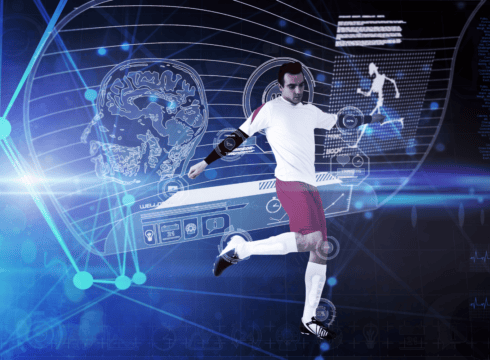The demand for accurate sports predictions is soaring, driven by financial stakes and emotional investments
ML algorithms can analyse vast datasets to identify patterns and trends that might not be immediately apparent to human analysts
Another anticipated development in sports analytics is the integration of virtual reality and augmented reality
Inc42 Daily Brief
Stay Ahead With Daily News & Analysis on India’s Tech & Startup Economy
In an era where data is king, the sports prediction industry has experienced a profound transformation fueled by data-driven personalisation. No longer are predictions based solely on gut instincts and intuition.
Today, predictive analytics and sophisticated algorithms are revolutionising how sports enthusiasts engage with their favourite teams and matches, igniting a new era of interaction and connection.
The demand for accurate sports predictions is soaring, driven by financial stakes and emotional investments. As the sports industry increasingly turns to data-driven decision-making, artificial intelligence (AI) and machine learning (ML) have become pivotal tools. These technologies are redefining the prediction landscape, offering unparalleled accuracy and insights.
Artificial Intelligence and Machine Learning In Sports Prediction
AI and ML are branches of computer science focused on building systems capable of performing tasks that typically require human intelligence. AI encompasses a broad range of capabilities, including problem-solving, speech recognition, and visual perception. Machine learning, a subset of AI, involves the use of algorithms and statistical models to enable computers to improve their performance on a task with experience.
In the context of sports predictions, ML algorithms are particularly valuable. These algorithms analyse vast datasets to identify patterns and trends that might not be immediately apparent to human analysts.
For example, by processing historical game data, player statistics, and even social media sentiment, ML models can predict the outcomes of games with remarkable precision. Techniques such as neural networks, decision trees, and clustering play crucial roles in enhancing the predictive power of these models.
The use of AI and ML in sports prediction is not entirely new, but their role has become increasingly pivotal. Early applications were limited by computational power and data availability.
However, advancements in technology and the exponential growth of data have now made it possible to build more sophisticated and accurate models. These technologies are now integral to the operations of many sports analytics firms, betting companies, and professional sports teams.
Ethical Considerations And Regulatory Frameworks
As with any powerful technology, the use of AI and ML in sports prediction brings ethical considerations to the forefront. One of the primary concerns is privacy and data protection. The datasets used for training predictive models often contain sensitive information about players, teams, and even fans. Ensuring this data is handled responsibly is crucial to maintaining trust and integrity in the industry.
Moreover, the use of AI and ML should be transparent and accountable. This includes being open about the methodologies used in creating predictive models and ensuring that these technologies are used in a manner that is fair and unbiased.
Regulatory frameworks are beginning to emerge to address these issues, providing guidelines on data usage, algorithmic transparency, and accountability. However, as the technology evolves, these frameworks will need to be continuously updated to keep pace with new developments.
Future Trends And Developments
The future of sports prediction technology is poised for exciting advancements. AI and ML will continue to evolve, incorporating more sophisticated techniques and broader datasets.
One anticipated development is the integration of virtual reality and augmented reality in sports analytics. These technologies can provide immersive experiences and real-time data visualisation, offering deeper insights into game strategies and player performances.
Another growth area is the adoption of more advanced neural networks and deep learning models, which can process and analyse data at an even more granular level. This will enhance the ability to make accurate predictions not only about game outcomes but also about individual player performances and injury risks.
However, the adoption and scaling of these emerging technologies come with challenges. One significant hurdle is the need for massive amounts of high-quality data, which can be expensive and time-consuming to collect. Additionally, there is the challenge of integrating new technologies with existing systems and ensuring that they are user-friendly and accessible to a broad range of stakeholders in the sports industry.
The integration of AI and ML in sports prediction marks a transformative shift in the industry. These technologies offer a level of precision and insight that was previously unattainable, influencing decision-making at all levels.
As we look to the future, the potential of these technologies is vast, promising continued advancements and new applications that could redefine the landscape of sports analytics. However, with this potential comes responsibility.
Ensuring ethical use, protecting privacy, and maintaining transparency will be critical as we navigate this evolving landscape. By addressing these challenges proactively, the sports industry can harness the power of AI and ML to drive innovation and success, paving the way for a future where data-driven insights enhance every aspect of the game.
{{#name}}{{name}}{{/name}}{{^name}}-{{/name}}
{{#description}}{{description}}...{{/description}}{{^description}}-{{/description}}
Note: We at Inc42 take our ethics very seriously. More information about it can be found here.


